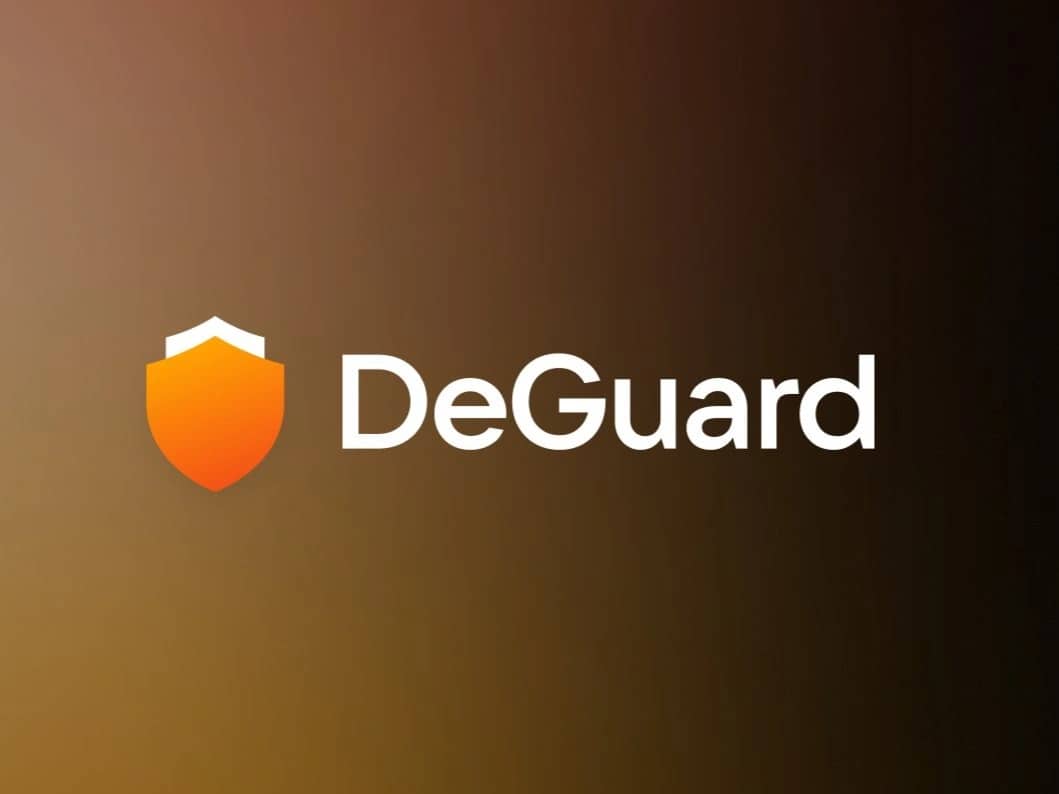DeGuard
DeGuard is a project focused on building censorship-resistant infrastructure to provide users with access to information and services. It aims to leverage technology, including VPN and Web3 components, to address internet censorship and restrictions. [1] [9]
Overview
DeGuard is a decentralized VPN service that emphasizes user privacy by operating without logging or storing data. It uses a global network of over 40 nodes and advanced security protocols like WireGuard and VLess to ensure access even in heavily censored regions. Its product offerings include a blockchain-integrated dApp with NFT-based subscriptions for Web3 users, a Telegram MiniApp supporting traditional payments, and applications for major platforms. DeGuard combines crypto-native tools with mainstream accessibility to serve a broad user base, while monetizing through subscription models and maintaining a lean operational structure. [1]
Products
Telegram MiniApps
DeGuard uses Telegram MiniApps as a key distribution and user acquisition tool. It offers in-app VPN access with no downloads or logins required. Users can purchase subscriptions via crypto or bank cards and instantly receive configurations for all major platforms.
Each MiniApp supports custom branding, referral tracking, and localized pricing, making them effective for B2C and partner-led integrations. These lightweight apps are especially effective in regions with censorship and serve as a scalable channel for onboarding users directly within Telegram. [3]
Mobile & Desktop Apps
DeGuard is developing standalone mobile and desktop apps to support long-term user retention and recurring subscriptions. The Android app is ready for a soft launch, while iOS and desktop versions for macOS, Windows, and Linux are in progress. These apps support stealth protocols and enable card-based subscription purchases, targeting users who prefer traditional app experiences over Telegram-based access. [3]
Multichain Web3 App
DeGuard’s multichain Web3 dApp enables decentralized VPN access through wallet-based login without requiring email or KYC. Users mint NFT-based subscriptions directly on-chain across networks like EVM and TON, selecting a plan, paying gas, and receiving instant access. The platform supports varied subscription logic via smart contracts and is positioned for integration with DAOs, token campaigns, and airdrop initiatives. [3]
Technology
VPN Protocol
DeGuard’s VPN protocol stack is built on VLESS using a customized V2Ray core, optimized for stable and stealthy connections in regions with heavy censorship like Russia, UAE, Turkey, and Iran. It incorporates TLS-level obfuscation, port randomization, and fallback mechanisms, with future support planned for Shadowsocks and VMess to expand compatibility. For areas with lower censorship, DeGuard also offers standard WireGuard support. The team prioritizes refining one protocol stack at a time to maintain stability and scalability. [2]
Server Infrastructure
DeGuard operates over 40 active VPN nodes distributed across more than 15 countries, using a mix of self-hosted, third-party, and partner-managed infrastructure. The system includes auto-routing, load balancing, and region-specific fallback logic, with hosting diversified to reduce dependence on centralized cloud services. The current architecture supports existing demand and can scale three to five times without structural changes. [2]
Telegram-Native Product Layer
DeGuard uses Telegram as its primary user onboarding and activation channel by deploying VPN services through branded MiniApps within the Telegram platform. These MiniApps enable native payments (crypto, cards, local methods), instant VPN configuration access post-purchase, and require no app installation or login. Custom partner-branded MiniApps support revenue sharing, while backend-managed funnel logic allows push-triggered upgrades and upsells. This approach enables rapid product iteration, often going live in under 24 hours. [2]
Cross-Platform Apps
DeGuard provides native applications for extended use across Android, iOS, Windows, macOS, and Linux, offering flexibility beyond Telegram-based access. Mobile apps are built on native stacks (Android is available, iOS is in final testing), while desktop clients use Qt with v2ray integration. All platforms support stealth transport, dynamic routing, and unified configuration syncing, allowing users to access DeGuard through any device while maintaining a consistent subscription plan. [2]
Admin, Monitoring & Ops Automation
DeGuard uses real-time monitoring to track server uptime, bandwidth, and latency by region. Operations are streamlined through automated configuration and delivery systems, with Telegram-based trial provisioning and support already in place. Admin dashboards and partner tools are scheduled for release by Q3 2025. The platform is built for lean operations, allowing a small team to manage global infrastructure with minimal manual effort. [2]
Web3 Architecture
DeGuard’s Web3 architecture supports a crypto-native access layer through NFT-based subscriptions for monthly, yearly, or lifetime VPN service. Users connect their wallets to mint access passes without registration or KYC, enabling anonymous and censorship-resistant usage. The system runs on audited smart contracts across EVM, TON, and Algorand, and includes an admin panel for partners to manage plans and promotions. This setup allows flexible scaling across blockchains and supports Web3-native and Web2-compatible use cases. [2]
DGN
The $DGN token is the utility asset used within DeGuard’s decentralized compute network. It supports key functions such as staking, governance participation through the DAO, network security, and user verification. The token also incentivizes user engagement and activity.
It is central to the DAO’s economic structure, contributing to protocol sustainability, ecosystem growth, and community participation. Token holders can stake $DGN to operate nodes, earn rewards, and engage in governance. The system also includes mechanisms for token buybacks, burning, and staking pools to manage supply and distribution. [6] [8]
